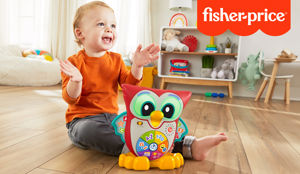Can you believe that in the UK, over 9 thousand sets of twins and 132 sets of triplets/quadruplets were born in 2018? The number of multiples births has steadily risen over recent decades. One reason for this is because more women have access to fertility treatments, making birthing multiples more common. Secondly, women are having children later in life, which increases your chances of having twins. You'll need to wait for your 12-week scan to find out if you're having more than one baby.
There are two different types of twins - identical and non-identical.
Identical Twins
Identical twins will always be the same sex. That is because following the fertilisation of a single egg, it divided, creating identical twins, or a ‘monozygote’, with the same XY mix, as there was just one egg.
Non-Identical Twins
More commonly, there are non-identical twins. These little ones can be either sex - a boy and a girl, both girls and both boys. At the point of fertilisation for these tiny people, two eggs and two sperm met and fell in love. Unlike identical twins, who have the same genes, these guys are completely different, as two different eggs were fertilised.
Though only a scan will confirm if you are hosting a small party in there, there'll be a few tell-tale signs that there maybe twice the fun ahead:
- Increased morning sickness & nausea
- Measuring larger for your expected dates
- · Higher than normal hCG levels (pregnancy hormones)
- Extreme tiredness
- Increased weight gain
Did you know there is an old wives' tale that suggests that if you are tall, you have an increased chance of having twins?
As your pregnancy progresses, you may also find that you seem to experience more pronounced symptoms than your counterparts just housing the one baby. As the babies take up more room, you may find that you become short of breath, and could also suffer from anaemia. Your midwife will keep an eye on your blood tests and may recommend you have some supplements.
If you have just found out you are expecting twins, don’t worry if you aren’t jumping for joy immediately. The prospect of one baby can be daunting, so it is not surprising that some women finding out this news are a little overwhelmed. Don’t be surprised if it takes your partner a little time to get their head around it too.
Not only are there different types of twins in terms of identical and non-identical, the way in which they are housed during pregnancy can also vary:
Dichorionic Diamniotic (DCDA)
These are the most straightforward. They both have their own placenta and own amniotic sac with an inner and outer membrane (amnion and chorion). Think of these guys as having their own house, own drive, a moat, and a fence! These guys have it all.
Monochorionic Diamniotic (MCDA)
These bundles of fun have just one placenta, and both have an inner membrane, but only a single outer membrane. A bit like living in a house made into two flats!
Monochorionic Monoamniotic (MCMA)
One placenta and sharing the membranes. This type of twin pregnancy is rare, and you will be very closely monitored.
Once you have had your scan, your consultant will explain everything and what care you should expect to receive throughout your pregnancy. Most multiple pregnancies result in healthy babies in mum's arms, and are overall, uneventful. However, carrying two or more babies does carry more risks.
There is an increased chance of maternal anaemia, pre-eclampsia, and gestational diabetes when expecting more than one baby. Your midwife will look out for these things though, so don’t worry too much. There is also an increased chance of premature birth, and in fact, most multiples are born before 40-weeks. Depending on the type of multiples you are having, you will be offered a planned birth from 32-weeks with MCMA twins and 37-weeks with DCDA twins.
Another reason that you may need regular scans, is to ensure that your babies aren’t showing signs of twin-to-twin transfusion syndrome (TTTS). This is caused by abnormal connections between blood vessels, and can result in an imbalance of blood flow, which in turn sees one twin thriving over the other. If this occurs, your care plan will be individualised to meet your circumstances.







